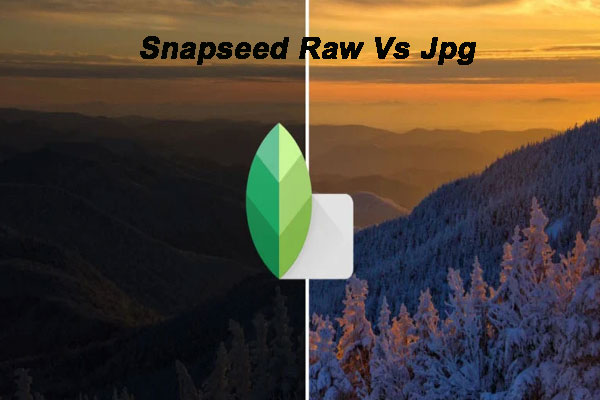Recognizing JPG and RAW Formats
Understanding the key distinctions between RAW and JPG picture formats is essential before exploring Snapseed's features:
RAW
- Uncompressed Data: Straight from the camera's sensor, RAW files include unfiltered picture data. During the in-camera processing phase, they are neither compressed or changed.
- Maximum Image Data: The most comprehensive image data, including color data and dynamic range, is retained in RAW files. This yields the best possible picture quality and leaves plenty of space for post-processing tweaks.
- Flexibility in Post-Processing: When it comes to post-processing, RAW files provide photographers with unmatched versatility. Fine-tuning exposure, color balance, and other aspects of a picture without sacrificing quality is possible.
- Huge File Size: Because RAW files hold a greater amount of data than JPG files, they are bigger. Your device's storage may need to be expanded for this.
JPG
- Compressed Data: During in-camera processing, JPG data undergo compression. The quality of the images is lost as a result of this compression, which lowers the file size but also discards some picture data.
- Convenience: As soon as a photograph is taken, JPG files are prepared for sharing and viewing. They work well in scenarios when convenience and quickness are crucial.
- Limited Post-Processing: Compared to RAW data, JPG files provide fewer possibilities for post-processing modifications. Image data cannot be completely restored after it has been lost during compression.
Using RAW and JPG Files in Snapseed
Although users may edit both RAW and JPG photos using Snapseed, there are notable differences in how each format is handled:
1. RAW Data:
- Users may import and edit RAW files straight inside Snapseed since the program recognizes them.
- You may use all of Snapseed's powerful editing tools and filters while working with RAW files. This entails making exact modifications to sharpness, color balance, exposure, and other aspects.
- The non-destructive aspect of RAW editing is preserved by Snapseed, thus your original RAW file is not altered. You may play around with different changes and quickly go back to the original if necessary.
2. JPEG Data:
- Snapseed also allows you to import and edit JPG files. The program provides a large selection of JPG picture enhancement tools and filters.
- Although you can make extensive adjustments to JPG photographs, remember that because of the compression used on JPGs, you have less post-processing freedom than you would with RAW files.
- The editing procedure with Snapseed is also non-destructive for JPG files, so your original photo is kept intact.
Selecting Between JPG and RAW
The decision between RAW and JPG mostly comes down to your workflow and photographic objectives:
Select RAW if: You want the most freedom in editing, post-processing patience, and optimal picture quality. Professional photographers and others who want to tweak their photos will find RAW to be excellent.
Select JPG. If: You don't intend to perform a lot of post-processing, value speed and ease, and need your photographs ready for sharing right away. JPG is appropriate for casual photography and daily photos.
Conclusion: Snapseed Raws Vs Jpg
Users of Snapseed's mobile photography have flexibility and creative control thanks to the app's support for both RAW and JPG formats. Snapseed makes sure you can adjust your photos and get the effects you want in post-processing, whether you choose RAW for unmatched quality and editing options or JPG for easy and fast sharing.
Snapseed for PC Blogs
Snapseed Vs Apple Photos
Lightroom App Vs Snapseed
Snapseed Vs VSCO: Ultimate Showdown
Snapseed for Mac Latest Version, Free Download
Best Presets for Snapseed: That Work Like Magic
Snapseed Alternative for PC, Windows 11/10 macOS Latest Version
Snapseed Like App for Mac: Choose Your Best Editor
Snapseed vs PicsArt
Snapseed and Raw Files
Is Snapseed Like Snapchat
Snapseed Raws Vs Jpg
